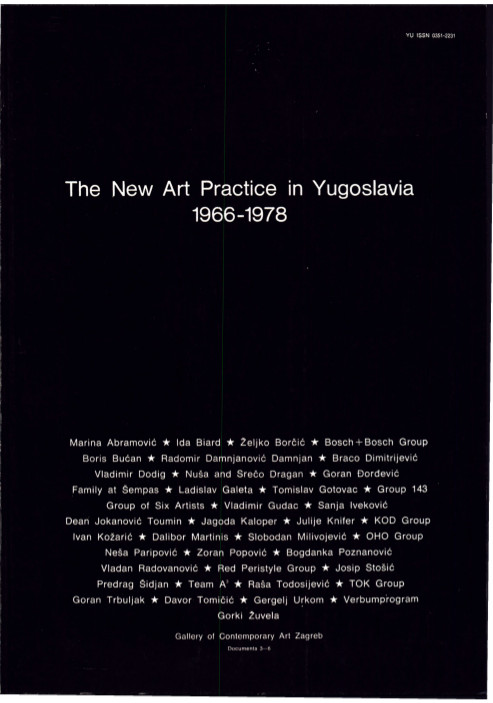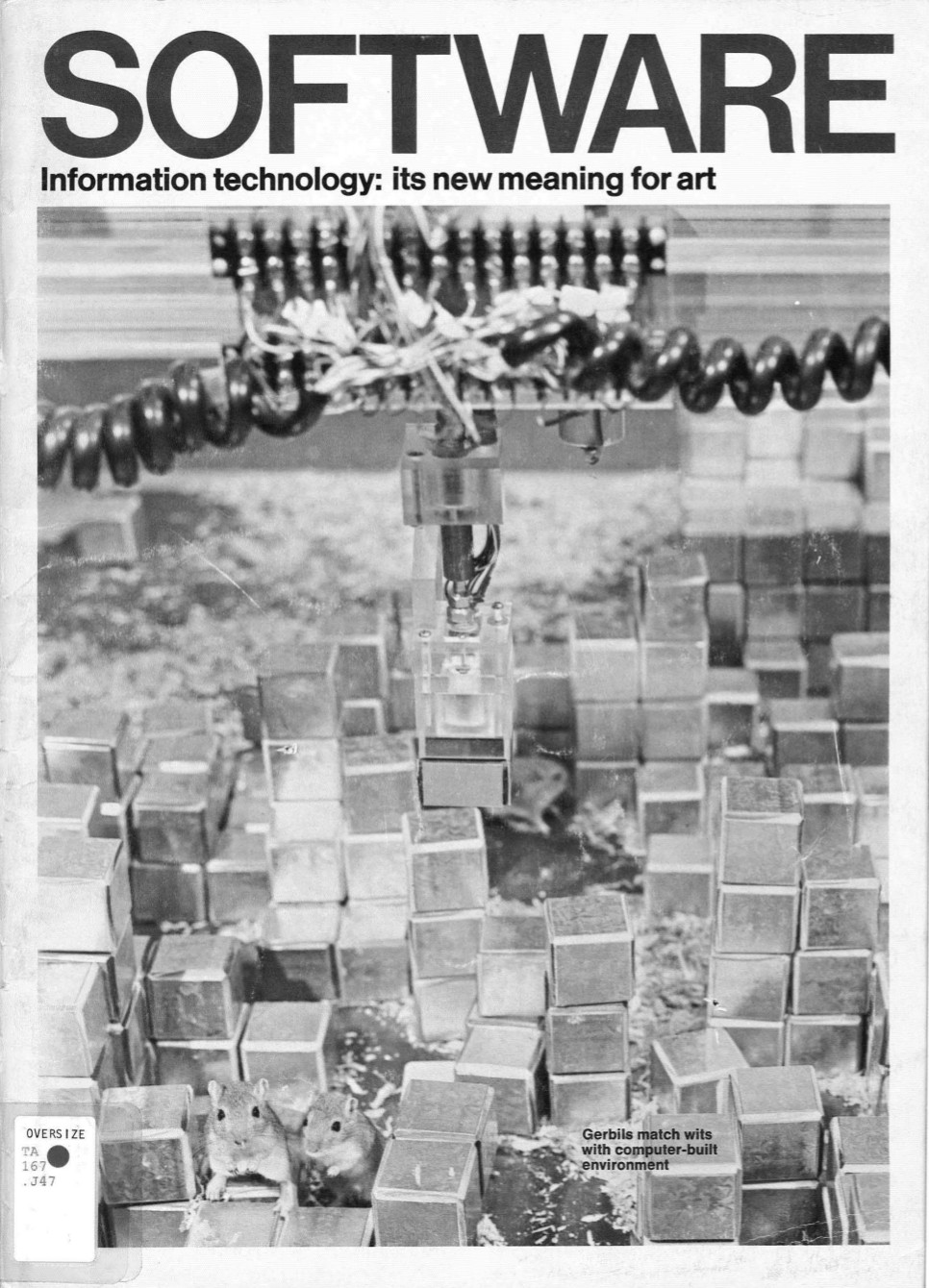The New Art Practice in Yugoslavia, 1966-1978 (1978) [English, SerboCroatian]
Filed under catalogue | Tags: · 1960s, 1970s, art, art criticism, art history, conceptual art, neo-avant-garde, new art practice, performance art, yugoslavia

Catalogue for an exhibition on The New Art Practice held in September-October 1978 in Zagreb. The New Art Practice was a term created for a generation of artists in the former Yugoslavia active in the late 1960s and throughout the 1970s. These artists shifted their practice to spaces outside the traditional studio, onto city streets, into artist-run spaces, and in multimedia performances and experimental publications.
With texts by Marijan Susovski, Ješa Dengri, Tomaž Brejc, Davor Matičević, Nena Baljković, Ida Biard, Mirko Radojičić, Bálint Szombathy, Vladan Radovanović, Jasna Tijardović, Slavko Timotijević, Vladimir Kulić, Vladimir Mattioni.
Editor Marijan Susovski
Publisher Gallery of Contemporary Art, Zagreb, 1978
Volumes 3-6 of Documents
80+[61] pages
Exhibition of the artists’ publications of the New Art Practice (MoMA, New York, 2011).
PDF, PDF (English, 9 MB)
PDF, PDF (SerboCroatian, 255 MB)
Ed Ruscha: Leave Any Information at the Signal: Writings, Interviews, Bits, Pages (2002)
Filed under book | Tags: · abstract expressionism, art, conceptual art, photography, pop art

“Ed Ruscha is among the most innovative artists of the last forty years. He is also one of the first Americans to introduce a critique of popular culture and an examination of language into the visual arts. Although he first made his reputation as a painter, Ruscha is also celebrated for his drawings (made both with conventional materials and with food, blood, gunpowder, and shellac), prints, films, photographs, and books. He is often associated with Los Angeles as a Pop and Conceptualist hub, but tends to regard such labels with a satirical, if not jaundiced, eye. Indeed, his work is characterized by the tensions between high and low, solemn and irreverent, and serious and nonsensical, and it draws on popular culture as well as Western art traditions.
Leave Any Information at the Signal not only documents the work of this influential artist as he rose to prominence but also contains his writings and commentaries on other artistic developments of the period. The book is divided into three parts, each of which is arranged chronologically. Part one contains statements, letters, and other writings. Part two consists of more than fifty interviews, some of which have never before been published or translated into English. Part three contains sketchbook pages, word groupings, and other notes that chart how Ruscha develops ideas and solves artistic problems. They are published here for the first time. The book also contains more than eighty illustrations, selected and arranged by the artist.”
Edited and with an Introduction by Alexandra Schwartz
Publisher MIT Press, 2002
October Books series
ISBN 0262182203, 9780262182201
473 pages
PDF (updated on 2022-11-13)
Comments (3)Software: Information Technology: Its New Meaning for Art, catalogue (1970)
Filed under catalogue | Tags: · art, computer art, computing, conceptual art, cybernetics, machine, software, software art

Software was a show curated by an artist and critic Jack Burnham for the Jewish Museum in Brooklyn, New York City, 16 September – 8 November 1970, and the Smithsonian Institution, Washington, D.C., 16 December 1970 – 14 February 1971. The show put together computers and conceptual artists, linking them through the idea of software as a process or a program to be carried out by a machine or, why not, by the audience based on “instruction lines” formulated by the artist.
Participating artists: Vito Acconci, David Antin, Architecture Group Machine M.I.T., John Baldessari, Robert Barry, Linda Berris, Donald Burgy, Paul Conly, Agnes Denes, Robert Duncan Enzmann, Carl Fernbach-Flarsheim, John Godyear, Hans Haacke, Douglas Huebler, Joseph Kosuth, Nam June Paik, Alex Razdow, Sonia Sheridan, Evander D. Schley, Theodosius Victoria, Laurence Weiner.
Catalogue coordinator Judith Benjamin Burnham
Publisher The Jewish Museum, 1970
71 pages
via Marina Noronha <3
more about the show (Monoskop wiki)
more about Jack Burnham (Monoskop wiki)
PDF (no OCR, black&white)
Comments (2)
